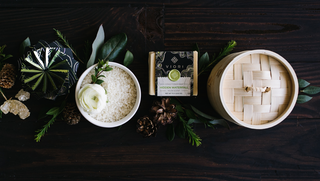Conditioner bars have emerged as game-changers in the world of hair care. For novices, these solid alternatives to traditional liquid conditioners might seem intimidating at first glance. However, mastering the use of conditioner bars can transform your hair care routine from basic to pro-level, offering both environmental benefits and exceptional results for your locks.
In this comprehensive guide, we'll delve into everything you need to know about conditioner bars, from their composition to application techniques, troubleshooting, and their overall impact on your hair health.
Understanding Conditioner Bars: What Sets Them Apart?
Conditioner bars are compact, solid forms of hair conditioner that eliminate the need for plastic packaging. Their composition typically includes nourishing ingredients like natural oils, butters, and conditioning agents. What distinguishes them from liquid conditioners is their concentrated formula and eco-friendly packaging, making them a sustainable choice for environmentally-conscious consumers.
Choosing the Right Conditioner Bar
When venturing into the world of conditioner bars, selecting the right one for your hair type is crucial. Look for bars specifically designed for your hair's needs—whether it's for dry, oily, curly, or color-treated hair. Consider ingredients like argan oil for hydration, shea butter for nourishment, or coconut oil for its detangling properties.
Mastering Application Techniques
Applying a conditioner bar differs slightly from using liquid conditioner. Start by wetting your hair thoroughly. Then, either rub the conditioner bar between your palms to create a creamy lather or directly glide the bar along the length of your hair. Massage the product into your strands, focusing on the ends where moisture is needed the most. Allow the conditioner to sit for a few minutes before rinsing thoroughly.
Top Tips for Effective Use
1. Less is More: Conditioner bars are concentrated, so a little goes a long way. Start with a small amount and adjust as needed.
2. Proper Storage: To prolong the life of your conditioner bar, store it in a dry, well-ventilated area between uses. Consider using a draining soap dish or tin to prevent it from becoming mushy.
3. Experiment with Techniques: Don't hesitate to try different application techniques. Some people prefer rubbing the bar directly onto their hair, while others find better results by creating a lather in their hands first.
Overcoming Common Challenges
1. Residue Build-Up: If you notice residue after using a conditioner bar, you might be using too much product. Rinse your hair thoroughly or consider using a clarifying shampoo occasionally to remove buildup.
2. Transition Period: For those transitioning from traditional liquid conditioners to bars, your hair might take time to adjust. Be patient; your locks will adapt to the new routine in a few washes.
Environmental Impact and Sustainability
One of the most significant advantages of conditioner bars is their positive impact on the environment. By eliminating plastic bottles, these bars reduce waste and contribute to a more sustainable future for our planet. Opting for conditioner bars is a small change that collectively makes a big difference.
Conclusion
Mastering the use of conditioner bars might seem daunting initially, but with the right guidance and techniques, anyone can elevate their hair care routine to a professional level. From choosing the right bar to perfecting application methods and overcoming challenges, conditioner bars offer an eco-friendly, effective, and sustainable solution for healthier, happier hair.
In this comprehensive guide, we'll delve into everything you need to know about conditioner bars, from their composition to application techniques, troubleshooting, and their overall impact on your hair health.
Understanding Conditioner Bars: What Sets Them Apart?
Conditioner bars are compact, solid forms of hair conditioner that eliminate the need for plastic packaging. Their composition typically includes nourishing ingredients like natural oils, butters, and conditioning agents. What distinguishes them from liquid conditioners is their concentrated formula and eco-friendly packaging, making them a sustainable choice for environmentally-conscious consumers.
Choosing the Right Conditioner Bar
When venturing into the world of conditioner bars, selecting the right one for your hair type is crucial. Look for bars specifically designed for your hair's needs—whether it's for dry, oily, curly, or color-treated hair. Consider ingredients like argan oil for hydration, shea butter for nourishment, or coconut oil for its detangling properties.
Mastering Application Techniques
Applying a conditioner bar differs slightly from using liquid conditioner. Start by wetting your hair thoroughly. Then, either rub the conditioner bar between your palms to create a creamy lather or directly glide the bar along the length of your hair. Massage the product into your strands, focusing on the ends where moisture is needed the most. Allow the conditioner to sit for a few minutes before rinsing thoroughly.
Top Tips for Effective Use
1. Less is More: Conditioner bars are concentrated, so a little goes a long way. Start with a small amount and adjust as needed.
2. Proper Storage: To prolong the life of your conditioner bar, store it in a dry, well-ventilated area between uses. Consider using a draining soap dish or tin to prevent it from becoming mushy.
3. Experiment with Techniques: Don't hesitate to try different application techniques. Some people prefer rubbing the bar directly onto their hair, while others find better results by creating a lather in their hands first.
Overcoming Common Challenges
1. Residue Build-Up: If you notice residue after using a conditioner bar, you might be using too much product. Rinse your hair thoroughly or consider using a clarifying shampoo occasionally to remove buildup.
2. Transition Period: For those transitioning from traditional liquid conditioners to bars, your hair might take time to adjust. Be patient; your locks will adapt to the new routine in a few washes.
Environmental Impact and Sustainability
One of the most significant advantages of conditioner bars is their positive impact on the environment. By eliminating plastic bottles, these bars reduce waste and contribute to a more sustainable future for our planet. Opting for conditioner bars is a small change that collectively makes a big difference.
Conclusion
Mastering the use of conditioner bars might seem daunting initially, but with the right guidance and techniques, anyone can elevate their hair care routine to a professional level. From choosing the right bar to perfecting application methods and overcoming challenges, conditioner bars offer an eco-friendly, effective, and sustainable solution for healthier, happier hair.

